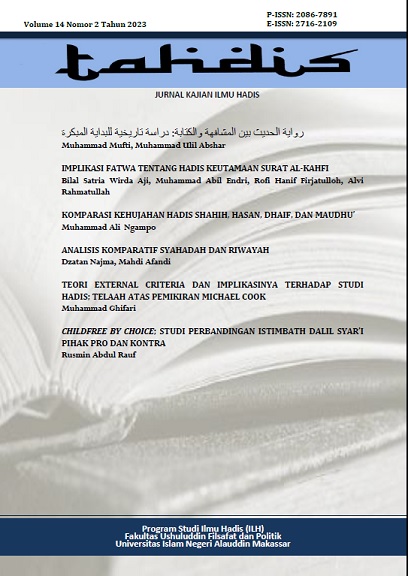Komparasi Kehujahan Hadis Shahih, Hasan, Dhaif, dan Maudhu’
Abstract
This article aims to find out the definition, division, proof, and hadith books of Sahih, Hasan, Daif, and Maudhu'. In this article the researcher uses a qualitative research method (library research). Hadith is a guide and guidance for the life of a Muslim and functions as an explanation of the verses of the Qur'an. In terms of quality, hadith are divided into three types; including authentic hadith, hasan hadith, and dhaif hadith. An authentic hadith is a hadith whose sanad is continued through the transmitter of a just and habitual person from a just and habitual person, until the end, is not shaz and is not famous illat, while a hasanic hadith is a hadith whose sanad is continuous, by a writer who is 'just but less accurate. dhabitan and avoids syaz and illat, while dhaif hadith is a hadith that meets the requirements of authentic hadith and does not meet the requirements of hasan hadith. The mudhu' hadith is something that was created and fabricated and then attributed to the Prophet falsely.
Authors who publish with this journal agree to the following terms:
(1) Authors retain copyright and grant the journal right of first publication with the work simultaneously licensed under a Creative Commons Attribution License that allows others to share the work with an acknowledgment of the work's authorship and initial publication in this journal.
(2) Authors are able to enter into separate, additional contractual arrangements for the non-exclusive distribution of the journal's published version of the work (e.g., post it to an institutional repository or publish it in a book), with an acknowledgment of its initial publication in this journal.
(3) Authors should sign copyright transfer agreement when they have approved the final proofs sent by Biogenesis prior the publication.







